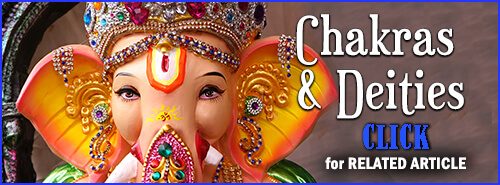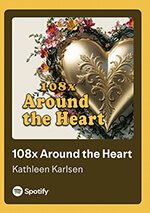
Jagadamba: Mother of the Universe
There are thousands of forms of the Divine Mother, the Great Goddess or the Divine Feminine in Hinduism. These goddesses are celebrated with mantras and stories as well as religious holidays in a way that is not present in the spiritual traditions in the Western world.
Share this page with a friend!
Watch nearly 400 videos on the Vocal Medicine Channel!
Meaning of the Name Jagadamba
Jagadamba is the “mother of the world” or “mother of the universe.” This term is used for many goddesses including Adi Shakti, Parvati, Saraswati, Lakshmi, Sita and Radha. There are temples in India dedicated specifically to Jagadambe including the Devi Jagadambe Temple in Madhya Pradesh and the Shree Jagadamba Devi Temple in Kerala.
The Divine Mother in Hinduism
The Divine Mother plays a huge role in Hinduism, sometimes receiving even more attention and devotion than God in masculine form. Each goddess has multiple attributes. Goddesses are often known by dozens, hundreds or even thousands of names.
Each name emphasize a particular quality of the goddess. “Shakti” is a general term for the energy that pervades the universe and gives rise to all form and action. In the Hindu tradition, the Divine Mother has seven basic forms: the biological mother, the wife of one’s teacher, the wife of a sage, a queen, the motherly aspect of cows, the mother earth and the mother of the universe.
The Biological Mother (Audau Mata)
Devotion to the biological mother is truly universal. The mother who provides directly for our survival needs as infants and children is revered around the world. This mother is our first teacher and our protector. She creates our first impressions of life. Mother’s Day is officially celebrated in over 152 countries. In many countries, this is the second Sunday in May.
Wife of One’s Teacher (Guru Patni)
In the Vedic tradition, children were sent to a type of boarding school beginning at age five. They learned both necessary knowledge and skills for success in the world and spiritual teachings. These students often lived at the home of their teacher or guru. The wife of the teacher was like a second mother and honored with an important place in their lives and affections.
Wife of a Sage (Brahmani)
There are many rituals and requirements established through the extensive Hindu scriptures. Advanced spiritual practitioners or sages spent a good deal of their time preforming these activities. The wives of these practitioners or sages often served as a counterbalance for the disciplines of religious life, providing for the needs of others with compassion and practicality.
The Queen (Raj Patnika)
The influence of a queen in any culture is exceptional. She often sets the tone for those under the rule of a king and queen. In Vedic culture, the queen was viewed as a kind of royal mother, ensuring that policies and laws were for the benefit of all citizens.
Motherly Aspect of Cows (Dhenu)
The role of milk in sustaining of all forms of mammal life is critical. In ancient India, milk was a significant food. The gentle nature of cows made them useful and beloved animals existing in harmony with mankind. Cows achieved a divine status and were protected and honored. The producers of milk inspired gratitude, love and respect.
The Mother as Caregiver (Dhatri)
The Divine Mother as caregiver can take the form of a nurse, doctor, daughter, sister, aunt, grandmother and so forth. The role of caregiver can also be fulfilled by someone in masculine form: husband, father, nephew, physician, etc. This role is essential in society. The caregiver may be highly knowledgeable or simply perform basic tasks related to sanitation, comfort or feeding.
Mother Earth (Prithvi)
The personification of nature as Mother Earth is extraordinarily common in world cultures. Perhaps the oldest name of Mother Earth is Gaia, stemming from Greek mythology. In the Hindu tradition, Mother Earth is the consort of Dyus Pita (Father Sky). She is also present in Buddhist texts as the witness for the enlightenment of Gautama.
Watch nearly 400 videos on the Vocal Medicine Channel!
The Goddess Jagadamba
The Goddess Jagadamba is also known as Adi Shakti (literally the “first mother”) and Amba. In the form of Jagadamba, the Divine Mother is a peaceful creator that initiates the next cycle of life. Jagadamba is the World Mother who may manifest in various forms, often with astrological associations. She embodies devotion, beauty, abundance and nourishment. Jagadamba is ultimately formless, though she possesses all of the forces of light, life, time and space.
Jagadamba Article Summary
Jagadamba is the “mother of the world” or “mother of the universe.” In the form of Jagadamba, the Divine Mother is a peaceful creator that initiates the next cycle of life. Jagadamba is the World Mother who may manifest in various forms, often with astrological associations. This article includes descriptions of the seven mothers of Hinduism.
Click for all content on our Site Map
Author Kathleen Karlsen
Kathleen Karlsen is a musician, artist, writer and speaker. She is the author of two books (Flower Symbols and Vocal Medicine) and over 200 articles. Kathleen, her husband Andrew, and their five children live in Bozeman, Montana. More about Kathleen Karlsen.
Share this page with a friend!
![]() Vocal Medicine Music on Spotify!
Vocal Medicine Music on Spotify!





